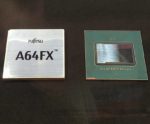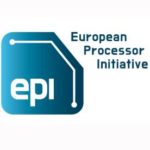In this fireside chat from SC19, Dr. Eng Lim Goh from HPE describes how the convergence of HPC and AI is changing the way scientists and engineers do their simulations. He also cites a case study of “Swarm Learning” where hospitals were able to train AI diagnostic models without sharing private patient data. Transcript: insideHPC: […]
World’s Fastest Supercomputers Look Familiar on November TOP500 List
Today marked the release of the 54th edition of the TOP500 list of the world’s fastest supercomputers. In summary, the top of the list remains largely unchanged. In fact, the top 10 systems are unchanged from the previous list. “The latest TOP500 list saw China and the US maintaining their dominance of the list, albeit in different categories. Meanwhile, the aggregate performance of the 500 systems, based on the High Performance Linpack (HPL) benchmark, continues to rise and now sits at 1.66 exaflops. The entry level to the list has risen to 1.14 petaflops, up from 1.02 petaflops in the previous list in June 2019.”
Intel Unveils New GPU Architecture and oneAPI Software Stack for HPC and AI
Today at SC19, Intel unveiled its new GPU architecture optimized for HPC and AI as well as an ambitious new software initiative called oneAPI that represents a paradigm shift from today’s single-architecture, single-vendor programming models. “HPC and AI workloads demand diverse architectures, ranging from CPUs, general-purpose GPUs and FPGAs, to more specialized deep learning NNPs which Intel demonstrated earlier this month,” said Raja Koduri, senior vice president, chief architect, and general manager of architecture, graphics and software at Intel. “Simplifying our customers’ ability to harness the power of diverse computing environments is paramount, and Intel is committed to taking a software-first approach that delivers unified and scalable abstraction for heterogeneous architectures.”
Slidecast: Dell EMC Using Neural Networks to “Read Minds”
In this slidecast, Luke Wilson from Dell EMC describes a case study with McGill University using neural networks to read minds. “If you want to build a better neural network, there is no better model than the human brain. In this project, McGill University was running into bottlenecks using neural networks to reverse-map fMRI images. The team from the Dell EMC HPC & AI Innovation Lab was able to tune the code to run solely on Intel Xeon Scalable processors, rather than porting to the university’s scarce GPU accelerators.”
Cray and Fujitsu to bring Game-Changing Arm A64FX Processor to Global HPC Market
Today Cray and Fujitsu announced a partnership to offer high performance technologies for the exascale era. Under the alliance agreement, Cray is developing the first-ever commercial supercomputer powered by the Fujitsu A64FX Arm-based processor with high-memory bandwidth (HBM) and supported on the proven Cray CS500 supercomputer architecture and programming environment.
Keys to Success for AI in Modeling and Simulation
In this special guest feature from Scientific Computing World, Robert Roe interviews Loren Dean from Mathworks on the use of AI in modeling and simulation. “If you just focus on AI algorithms, you generally don’t succeed. It is more than just developing your intelligent algorithms, and it’s more than just adding AI – you really need to look at it in the context of the broader system being built and how to intelligently improve it.”
Podcast: Full Rundown of SC19 Events in Denver
In this podcast, the Radio Free HPC team reviews the full list of events leading up to SC19 in Denver. “There’s a lot that happens before the exhibit floor opens on Monday night. Our old pal Rich Brueckner from insideHPC joins us to give us the full rundown. We even have a few parties to tell you about.”
European Processor Initiative Reaches Important Milestones in First Year
The European Processor Initiative (EPI) has announced the completion of important milestones in its first year. “The first-generation chip family, named Rhea, will include Arm ZEUS architecture general purpose cores and prototypes of high energy-efficient accelerator tiles: RISC-V based (EPAC), Multi-Purpose Processing Array (MPPA), embedded FPGA (eFPGA) and cryptography HW engine. First Rhea chips will be fabricated in N6 technology aiming at the highest processing capabilities and energy efficiency.”
NNSA Explorations: ARM for Supercomputing
Howard Pritchard from LANL and Simon Hammond from Sandia gave this talk at the Argonne Training Program on Extreme-Scale Computing 2019. “Sandia National Laboratories has been an active partner in leveraging our Arm-based platform since its early design, and featuring it in the deployment of the world’s largest Arm-based supercomputer, is a strategic investment for the DOE and the industry as a whole as we race toward achieving exascale computing.”
Dell EMC to Deploy World’s Largest Industrial Supercomputer at Eni
Today Eni announced plans to deploy the world’s largest industrial supercomputer at its Green Data Center in Italy. Called “HPC5,” the new system from Dell EMC will triple the computing power of their existing HPC4 system. The combined machines will have a total peak power of 70 Petaflops. “HPC5 will be made up of 1,820 Dell EMC PowerEdge C4140 servers, each with two Intel Gold 6252 24-core processors and four NVIDIA V100 GPU accelerators. The servers will be connected through an InfiniBand Mellanox HDR ultra-high-performance network.”













